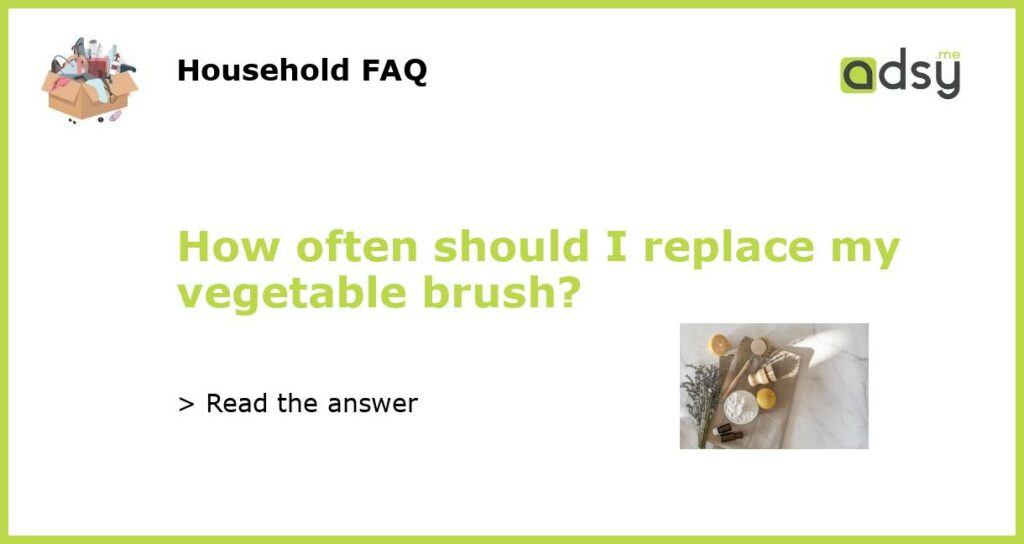When to Replace Your Vegetable Brush
Keeping your vegetables clean is an important part of maintaining your health. Using a vegetable brush is a common practice to remove dirt and bacteria from the surface of fruits and vegetables. But just like any other tool, vegetable brushes have a lifespan. So, how often should you replace your vegetable brush?
Understanding the Lifespan of a Vegetable Brush
The lifespan of a vegetable brush depends on various factors such as the quality of the brush, the frequency of use, and the type of vegetables you usually clean. Typically, vegetable brushes are made from durable materials like natural fibers or bristles, which can withstand regular use. However, over time, these bristles can become worn out, frayed, or accumulate bacteria and food residues.
It’s also important to consider the type of vegetables you clean regularly. If you mostly clean soft-skinned vegetables like tomatoes or berries, the bristles may wear down faster compared to cleaning tougher vegetables like potatoes or carrots. Thus, it’s essential to assess the condition of your vegetable brush regularly to determine when it needs replacement.
Signs it’s Time to Replace Your Vegetable Brush
While there is no set rule on when to replace your vegetable brush, there are several signs that indicate it’s time for a new one:
1. Worn-out bristles: If the bristles on your vegetable brush are bent, frayed, or too soft, it may not effectively clean your produce. Replace it if you notice significant wear and tear.
2. Bacterial buildup: Over time, vegetable brushes can accumulate bacteria and food residues, even with proper cleaning. If you notice a foul odor or discoloration on your brush, it’s a sign that it needs to be replaced.
3. Increased difficulty in cleaning: If you’re finding it harder to remove dirt or debris from your vegetables, it may be due to the bristles losing their effectiveness. A worn-out brush may not be able to provide the necessary friction to clean your produce thoroughly.
Tips for Maintaining Your Vegetable Brush
To extend the lifespan of your vegetable brush, here are some tips:
1. Regularly clean your brush: Rinse your vegetable brush with warm water and soap after each use. This will help remove any bacteria or dirt trapped in the bristles.
2. Allow it to dry properly: After cleaning, ensure that your vegetable brush is completely dry before storing it. Moisture can encourage bacterial growth and cause the bristles to deteriorate faster.
3. Store in a well-ventilated area: Avoid storing your vegetable brush in a closed container or drawer. Instead, place it in an open area with good airflow. This will help prevent the bristles from staying damp and developing mold or mildew.
While there is no specific timeline for when to replace your vegetable brush, it’s important to monitor its condition for signs of wear and bacterial buildup. Regular cleaning and proper maintenance can help prolong its lifespan. If you notice worn-out bristles, bacterial buildup, or difficulty in cleaning, it’s time to invest in a new vegetable brush. By keeping your vegetable brush in good condition, you’ll ensure that your produce remains clean and free from harmful contaminants.






